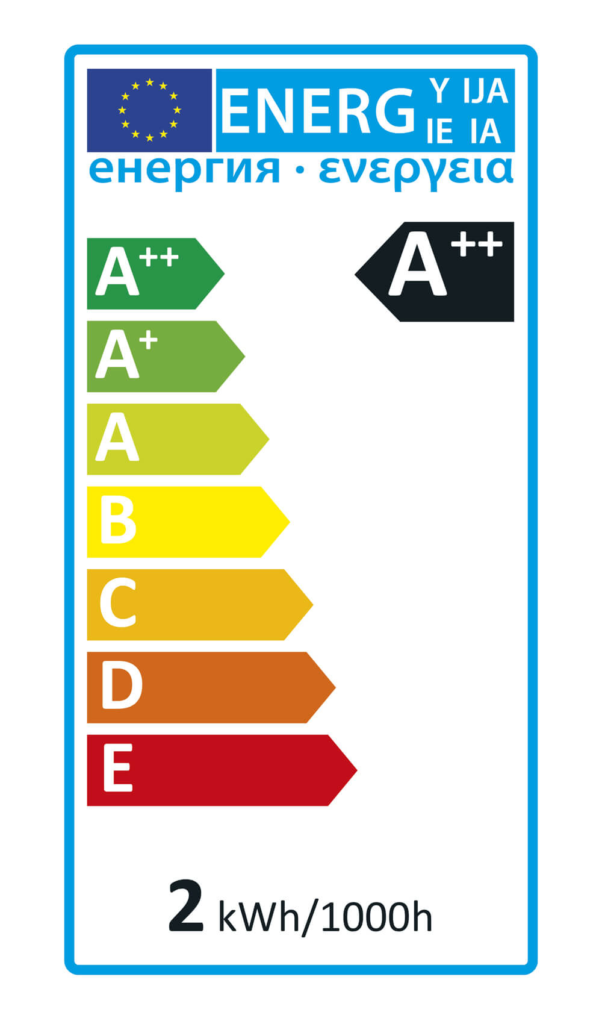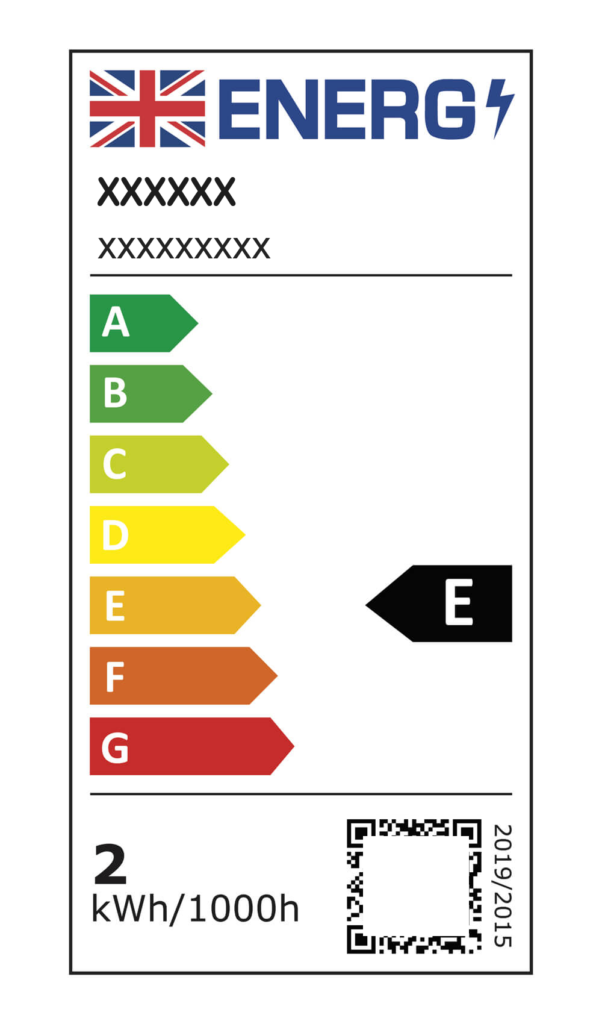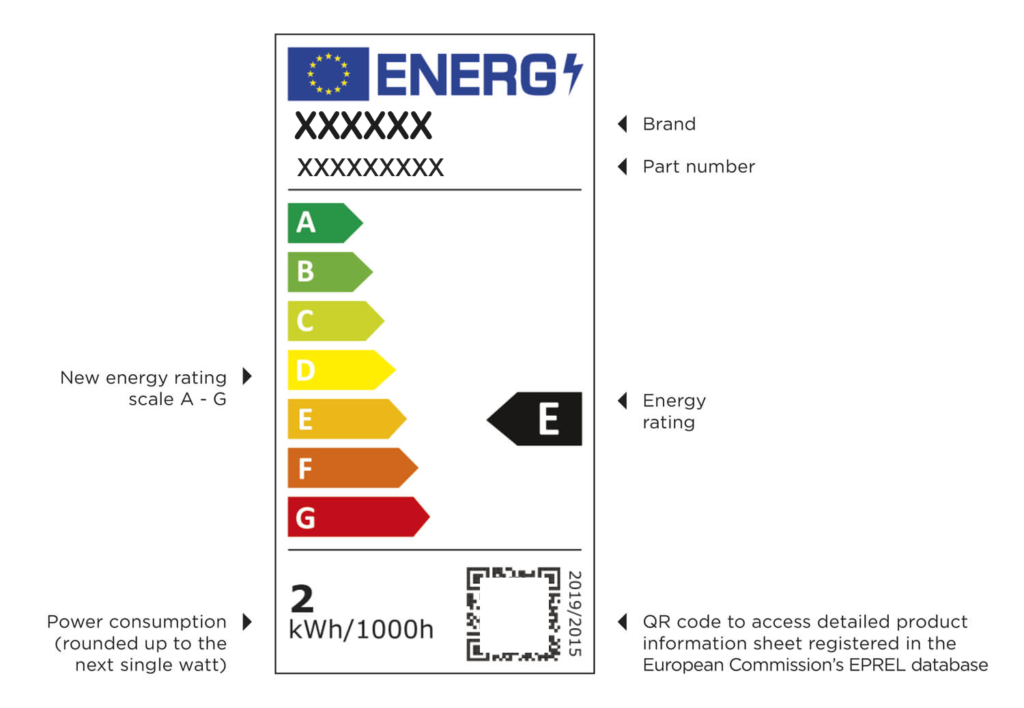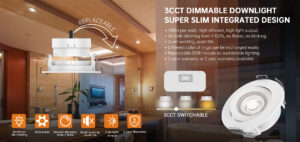Die Beleuchtungsbranche in Europa befindet sich aufgrund der aktualisierten EU-Energiekennzeichnungsvorschriften im Umbruch. Diese Änderungen sollen Nachhaltigkeit fördern, den Energieverbrauch senken und Innovationen bei Beleuchtungsprodukten anregen. Das neue EU-Energielabel, das seit 2021 schrittweise eingeführt wurde und ab 2025 vollständig gilt, ersetzt die ältere, komplexere Skala durch eine vereinfachte und anspruchsvollere Klassifizierung von A bis G. Diese Aktualisierung betrifft Hersteller, Händler und Verbraucher gleichermaßen und bietet klarere und transparentere Informationen zur Energieeffizienz von Beleuchtungsprodukten. Für Akteure in wichtigen europäischen Märkten wie Deutschland, den Niederlanden, Frankreich, Schweden, Dänemark, Norwegen und dem Vereinigten Königreich ist das Verständnis dieser neuen Kennzeichnungsvorschriften unerlässlich.
Entwicklung des EU-Energielabels in der Beleuchtungsindustrie
Das EU-Energielabel-System treibt seit Langem die Verbesserung der Energieeffizienz von Produkten, einschließlich Beleuchtung, voran. Vor 2021 wurde für Beleuchtungsprodukte eine Skala von A+++ (sehr effizient) bis E (am wenigsten effizient) verwendet. Dieses System war zwar detailliert, wurde aber aufgrund der Vielzahl an Pluszeichen und sich überschneidenden Klassen unübersichtlich. Um dem entgegenzuwirken, führte die EU eine neue Verordnung für Lampen, LED-Module und Lichtquellen mit einem Lichtstrom über 30 Lumen ein, die seit September 2021 gilt. Das neue Label vereinfacht die Energieeffizienzskala auf ein übersichtliches A-G-System. Klasse A zunächst leer gelassen um die Hersteller zu ermutigen, noch effizientere Produkte zu entwickeln.
Infolgedessen wurden viele Produkte, die zuvor mit A++ oder A+++ bewertet wurden, in niedrigere Klassen wie B oder C eingestuft, was den strengeren Effizienzstandards Rechnung trägt. Das neue Label liefert neben dem Energieverbrauch zusätzliche Produktinformationen wie Lichtstrom, Lebensdauer und Farbwiedergabeindex (CRI). Dieser ganzheitliche Ansatz hilft Verbrauchern, Beleuchtungsprodukte umfassender zu bewerten. Darüber hinaus enthält das Label einen QR-Code, der direkt zur Datenbank des Europäischen Produktregisters für Energiekennzeichnung (EPREL) der EU führt und so den sofortigen Zugriff auf detaillierte Produktdaten ermöglicht und die Transparenz erhöht.
EPREL: Das Europäische Produktregister für Energiekennzeichnung
Der Europäisches Produktregister für Energiekennzeichnung (EPREL) EPREL ist eine digitale Datenbank der Europäischen Kommission zur Unterstützung des neuen Energieverbrauchskennzeichnungssystems. Alle Hersteller, Importeure und Bevollmächtigten müssen ihre energiekennzeichnungspflichtigen Produkte registrieren, bevor sie diese auf dem EU-Markt in Verkehr bringen. Die Registrierung umfasst detaillierte technische Informationen wie Energieverbrauch, Lichtstrom, Lebensdauer und die entsprechende Energieverbrauchsklasse.
- Transparenz: Es bietet eine zentrale, öffentlich zugängliche Plattform, auf der Verbraucher und Behörden Produktinformationen überprüfen können.
- Überwachung der Einhaltung der Vorschriften: Die Marktüberwachungsbehörden nutzen EPREL, um sicherzustellen, dass die in der EU verkauften Produkte den Energieeffizienzstandards entsprechen.
- Stärkung der Verbraucherrechte: Der QR-Code auf den Energielabels ist mit EPREL verknüpft und ermöglicht es den Verbrauchern, sofort auf verifizierte Produktdaten zuzugreifen.
Durch die Pflege einer umfassenden Produktdatenbank trägt EPREL dazu bei, irreführende Angaben zu verhindern und unterstützt das Ziel der EU, energieeffiziente und nachhaltige Beleuchtungsprodukte zu fördern.
Bisheriges EU-Energielabel

Neue EU-Energielabels

Neue Energielabels in Großbritannien

Zuvor hatte das Etikett eine Regenbogenfarbskala von Grün bis Rot und eine Buchstabenskala von A++ bis E.
Die überarbeitete Skala ist weiterhin von Grün bis Rot, verfügt jedoch über eine Beschriftungsskala von A bis G, wobei zur Erreichung dieser Stufen eine höhere Effizienz erforderlich ist. Daher werden viele Produkte, die zuvor mit A++ bewertet wurden, nun mit C oder D bewertet.
Auswirkungen auf Hersteller und Marktdynamik
Hersteller, ob in der EU oder im Ausland ansässig, müssen die aktualisierten Kennzeichnungsvorschriften einhalten, um Beleuchtungsprodukte auf dem europäischen Markt zu verkaufen. Die Registrierung bei EPREL ist vor Markteintritt obligatorisch und gewährleistet Transparenz und die Einhaltung der Vorschriften. Diese Anforderungen motivieren Hersteller, Energieeffizienz und Nachhaltigkeit bei der Produktentwicklung zu priorisieren. Die strengeren Standards und das vereinfachte Kennzeichnungssystem fördern Innovationen und führen zur Einführung fortschrittlicher LED-Technologien, intelligenter Beleuchtungslösungen und verbesserter Qualitätskontrollen, die die Produktlebensdauer verlängern und die Umweltbelastung reduzieren. Dieser Wandel steht im Einklang mit dem übergeordneten Ziel der EU, bis 2050 der erste klimaneutrale Kontinent der Welt zu werden. Durch die Förderung energieeffizienter Beleuchtung senkt die EU den Strombedarf und die CO₂-Emissionen und trägt so zu nachhaltigem Wachstum und globaler Wettbewerbsfähigkeit bei.Radians Lighting: Innovation und Qualität gemäß den neuen EU-Energielabels
Radians Lighting ist ein führender Hersteller, der sich auf hochwertige, energieeffiziente Beleuchtungslösungen spezialisiert hat, die den neuesten EU-Energielabel-Standards entsprechen. Das Unternehmen bietet kundenspezifische Lösungen an. LED-DownlightsRadians bietet eine breite Produktpalette an, die auf die Bedürfnisse des europäischen Marktes zugeschnitten ist, darunter:- LED-Downlights in verschiedenen Wattagen und Ausschnittgrößen, geeignet für private und gewerbliche Anwendungen.
- Dimmbare LED-Downlights ermöglicht flexible Lichtsteuerung und Energieeinsparung.
- Intelligente LED-Lösungen kompatibel mit Zigbee und anderen Smart-Home-Systemen.
- Blendarme und entspiegelte Downlights die den Sehkomfort verbessern und gleichzeitig die Effizienz erhalten.
Detaillierter Vergleich der Beleuchtungskategorien gemäß dem neuen EU-Energielabel
| Beleuchtungskategorie | Typischer Wattbereich | Energieeffizienzklassenbereich | Wichtigste Vorteile | Überlegungen |
|---|---|---|---|---|
| LED-Downlights | 3 W – 30 W | A – D | Hohe Effizienz, lange Lebensdauer, dimmbare Optionen | Für die Installation werden kompatible Treiber benötigt. |
| Aufbau-Downlights | 5 W – 25 W | SEI | Einfache Installation, vielseitige Designs | Etwas geringere Effizienz als bei Einbauleuchten |
| Intelligente LED-Downlights | 3 W – 15 W | A – C | Fernsteuerung, Energieüberwachung | Höhere Vorlaufkosten |
| Blendarme Downlights | 5 W – 20 W | B – D | Reduzierte Augenbelastung, geeignet für Büros | Können höhere Anfangskosten haben |
Neue Anforderungen an die Energieeffizienz

Was bedeuten die einzelnen Teile des Energielabels?

Den Verbrauchern werden nun auf jedem Energielabel mehr Informationen präsentiert. Daran muss man sich vielleicht erst gewöhnen, aber insgesamt sollten diese Änderungen ihnen dabei helfen, faire Produktvergleiche anzustellen.
Verbrauchernutzen und Markttransparenz
Das überarbeitete EU-Energielabel verbessert das Verbraucherverständnis durch klare und standardisierte Informationen. Dank des QR-Codes auf den Etiketten können Nutzer detaillierte Daten zu Energieverbrauch, Lichtleistung und Lebensdauer abrufen und so fundierte Kaufentscheidungen treffen. Verbraucher in Ländern wie Deutschland, Frankreich und Großbritannien können Produkte einfach vergleichen und jene mit der besten Energieeffizienz priorisieren. Dies trägt zu niedrigeren Energiekosten im Haushalt und einer geringeren Umweltbelastung bei. Die vereinfachte Skala von A bis G beseitigt die Verwirrung, die durch die vorherige Plus-Skala entstand, und erleichtert es allen Verbrauchern, die effizientesten Beleuchtungsoptionen zu finden. Darüber hinaus motivieren nicht-energetische Parameter wie Geräuschpegel und Reparierbarkeit die Hersteller, Produktqualität und Nachhaltigkeit zu verbessern.Offizielle Informationen zu EPREL und dem neuen Energielabel
Der Europäisches Produktregister für Energiekennzeichnung (EPREL) ist ein obligatorisches Register für alle in der EU verkauften energieeffizienten Produkte. Hersteller müssen vor Markteintritt umfassende Produktdaten hochladen. Diese Daten umfassen:- Energieverbrauchszahlen
- Lichtstrom (Helligkeit)
- Lebensdauer- und Haltbarkeitskennzahlen
- Farbwiedergabeindex (CRI)
- Die Energieeffizienzklasse




